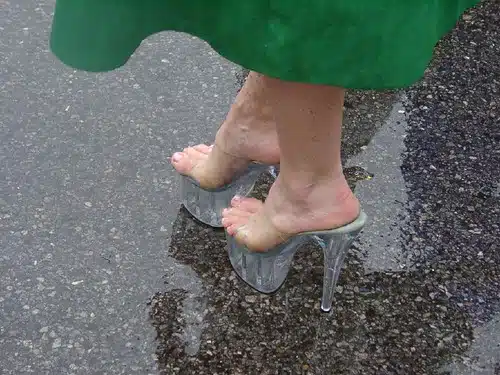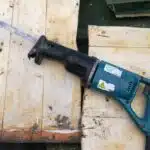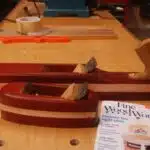Plexiglass, also known as acrylic glass, is a versatile material used in various industries from construction to furniture making. With its high durability and lightweight properties, it has become a popular option for designers and manufacturers alike. However, cutting plexiglass can be challenging without the right tools and techniques.
As a plexiglass technician with years of experience in the industry, I have encountered numerous instances where cutting plexiglass was required to achieve desired designs. In this article, I will share my insights on how to cut plexiglass accurately and safely. Whether you are a DIY enthusiast or a professional designer, these tips will assist you in achieving precise cuts on your projects using plexiglass. So let’s delve into the world of cutting plexiglass and explore the best methods to create stunning designs that exceed your expectations.
What Is Plexiglass?
Plexiglass is a type of transparent plastic that is widely used in various applications. It was first introduced in the market as a substitute for glass due to its superior quality and durability. The uses of plexiglass are extensive, ranging from industrial, commercial, and residential purposes. Its flexibility and malleability make it an ideal material for making different shapes and sizes.
One of the differences between plexiglass and glass is their composition. Glass is made by melting sand at high temperatures, while plexiglass is derived from polymethyl methacrylate (PMMA). This material is heated until it softens, then molded into sheets or blocks of different sizes. Another difference is their strength; plexiglass can withstand impact better than glass, making it less susceptible to breakage.
Plexiglass has become increasingly popular because it offers many advantages over traditional glass products. It’s lightweight yet strong, shatter-resistant, UV-resistant, and easy to clean. When compared to other plastics or acrylics, plexiglass has excellent optical clarity that allows light to pass through easily without distortion. Understanding the properties of plexiglass is crucial when working with this material, especially when cutting or shaping it for different applications.
Understanding The Properties Of Plexiglass
- Plexiglass is an optically transparent, lightweight acrylic plastic material that is used in a variety of applications.
- Physical properties of plexiglass include its high strength, optical clarity, weatherability, and resistance to UV rays.
- Chemical properties of plexiglass are determined by its monomer composition, including methyl methacrylate, styrene and butadiene.
- Manufacturing processes for plexiglass involve the formation of a solid plastic sheet from the monomer mixture, the application of a protective coating, and the cutting of the material into the desired shape and size.
- Cutting plexiglass requires the use of a saw, laser cutting, or other specialized cutting tools, as well as the proper safety equipment and techniques.
- The finished product must meet the desired specifications, while taking into consideration the limitations of the material.
Physical Properties
As a plexiglass technician, it is essential to understand the physical properties of the material in order to effectively cut and shape it. Plexiglass has unique mechanical properties that distinguish it from other materials. It is highly impact-resistant, which makes it an ideal choice for applications where durability is crucial. Additionally, plexiglass has a higher tensile strength than traditional glass, which means it can withstand greater strain without breaking.
Thermal properties also play a significant role in cutting plexiglass. Unlike traditional glass, plexiglass has a lower melting point and can be easily deformed when exposed to high temperatures. This makes it important to use a saw with sharp teeth and low RPMs when cutting plexiglass to prevent overheating and warping of the material. Additionally, using lubricants such as mineral oil or water can help reduce friction and heat buildup during cutting.
Understanding the mechanical and thermal properties of plexiglass is fundamental in achieving precise cuts when working with this material. By selecting the appropriate tools and techniques, you can create clean edges without compromising the structural integrity of the piece being cut. As a technician or expert working with plexiglass, it is crucial to have an in-depth knowledge of these properties to ensure accurate fabrication of your project.
Chemical Properties
As a plexiglass technician or expert, it is crucial to have a complete understanding of the different properties of this material. In addition to mechanical and thermal properties, the chemical properties of plexiglass are just as important. Plexiglass has excellent durability and can withstand various environmental factors such as light exposure, moisture, and temperature changes. However, certain cleaning agents can cause chemical reactions that can significantly impact the integrity of the material.
It is essential to use appropriate cleaning agents when working with plexiglass to prevent unwanted chemical reactions that may compromise its durability. Avoid using harsh chemicals such as ammonia-based solutions or solvents containing acetone or alcohol. These chemicals can break down the molecular bonds in plexiglass and cause cloudiness or yellowing over time. Instead, opt for mild detergents or specialized plexiglass cleaners that are specifically formulated for this material.
In conclusion, having an in-depth knowledge of the various properties of plexiglass is vital for anyone working with this material. Understanding its mechanical, thermal and chemical characteristics can help ensure precise cuts and accurate fabrication while maintaining its durability. By using appropriate cleaning agents and avoiding harsh chemicals, you can keep your plexiglass creations looking clear and pristine for years to come!
Manufacturing Processes
Having a comprehensive understanding of the material properties of plexiglass is crucial for anyone working with this versatile material. As a plexiglass technician or expert, you must possess knowledge about the cutting techniques and manufacturing processes involved in producing plexiglass sheets and products. By knowing the manufacturing processes, you can better understand how to work with this material and ensure precise cuts without compromising its structural integrity.
One of the most common manufacturing processes used to create plexiglass sheets is extrusion. In this process, raw materials are heated until they become molten and then forced through a die to form long continuous sheets. Another method used for creating plexiglass products is injection molding, where liquid plastic is injected into a mold under high pressure. These manufacturing methods affect the mechanical, thermal and chemical characteristics of the final product.
Understanding the different manufacturing techniques used to create plexiglass products is essential for achieving optimal results when working with this material. In addition to knowing how it is produced, having an in-depth understanding of its various properties such as mechanical strength, thermal stability and chemical resistance can help you select the appropriate cutting techniques and fabrication methods to achieve precision and accuracy while maintaining its durability.
Safety Precautions When Cutting Plexiglass
When working with plexiglass, safety should always be a top priority. Proper equipment and eye protection are essential to ensure that accidents do not occur during the cutting process. Without taking these precautions, there is a risk of injury that could result in serious harm.
Before beginning any work with plexiglass, it is crucial to have the proper equipment on hand. This includes a sharp blade or saw specifically designed for cutting through this material. Using the wrong tool can cause the plexiglass to crack or shatter, leading to potential injury. Additionally, make sure that you have a stable work surface and clamps to secure the plexiglass in place while cutting.
Eye protection is another critical component when cutting plexiglass. Small shards of material can easily fly off during the cutting process and pose a danger to your eyesight. Wearing safety goggles or glasses will protect your eyes from any debris that may come loose while working. By following these safety precautions, you can help ensure that your project goes smoothly without any unexpected injuries.
Moving forward, it’s important to understand necessary tools for cutting plexiglass properly and safely. With the right equipment in hand and proper eye protection worn throughout the entire process, you can confidently move onto selecting tools for cutting.
Necessary Tools For Cutting Plexiglass
To effectively cut plexiglass, it is important to have the necessary tools on hand. Two of the most crucial tools are a sharp blade and a cutting speed that is appropriate for the thickness of the material. Blade selection depends on the type of cut being made, with straight cuts requiring a different blade than curved or angled cuts.
Cutting speed is also an essential consideration when cutting plexiglass. If the speed is too fast, it can cause melting and cracking of the material. Conversely, if the speed is too slow, it can cause chipping and flaking. The ideal cutting speed will depend on the thickness and hardness of the plexiglass, as well as the type of blade being used.
When selecting blades for cutting plexiglass, it’s important to choose one that is designed specifically for this material. These blades typically have smaller teeth and a finer edge than standard saw blades. Additionally, it’s important to ensure that the blade is sharp before beginning any cutting work. Dull blades can lead to uneven cuts and jagged edges.
As we’ve discussed, having proper blade selection and cutting speed are critical components in successfully cutting plexiglass materials. However, before any cuts take place, proper measuring and marking must be done to ensure accuracy in all cuts made. Let’s explore this process in greater detail in our next section.
The Importance Of Measuring And Marking
Having the necessary tools for cutting plexiglass is just one component of achieving a successful cut. Another important factor is maintaining a clean workspace. Before starting any cutting process, it is essential to remove any debris that may be present on the surface where the plexiglass will be placed. This prevents scratches or other damage to the material and ensures accuracy during measuring and marking.
Proper handling techniques are also crucial when working with plexiglass. It is important to handle the material with care and avoid bending or flexing it too much, which can cause cracks or breaks in the sheet. The edges of a plexiglass sheet are particularly vulnerable to damage, so it is recommended to always handle them with gloves or a cloth to prevent fingerprints and smudging.
In addition to clean workspaces and proper handling techniques, obtaining accurate measurements and markings is critical for successful cuts. This ensures that all cuts are straight and precise, resulting in a professional-looking finished product. In the next section, we will discuss various straight cutting techniques that can be used when working with plexiglass sheets.
Straight Cutting Techniques
Scoring plexiglass is a straightforward process that requires a utility knife or glass cutter and a straightedge. The straightedge is used to guide the utility knife, and the pressure of the blade creates a score mark in the material. Breaking plexiglass is the process of applying controlled force to the scored line in order to separate the two pieces. It is important to use even and constant pressure while breaking the material. Sanding is the process of smoothing the edges of the plexiglass after it has been cut. A sanding block with a medium-grit sandpaper should be used to gently sand the edges until they are smooth.
Scoring
Scoring is one of the most crucial techniques in straight cutting plexiglass. It involves making a shallow cut on the surface of the material to create a guide for future cuts. Scoring helps reduce chipping or cracking, which can occur when cutting plexiglass using other methods like sawing or drilling.
To achieve an excellent score line, you need to use scoring tools specifically designed for plexiglass. These tools include a plexiglass cutter, a utility knife, or a glass scorer. A plexiglass cutter is the best tool for creating long and straight lines while minimizing the risk of cracking. Using a utility knife is also effective but requires more force and precision. A glass scorer is ideal for creating curved lines or small cuts.
When scoring plexiglass, you need to apply firm pressure on the scoring tool while moving it slowly and steadily along the marked line. Ensure that you make only one pass with the scoring tool to prevent unnecessary damage to the material. After creating a score line, place the material on a flat surface with the scored side facing up and gently snap it along the line in one swift motion.
In conclusion, mastering scoring techniques is essential in achieving precise cuts when straight cutting plexiglass. By using appropriate scoring tools and following proper procedures, you can minimize chipping or cracking and produce high-quality results consistently.
Breaking
After mastering the art of scoring, the next crucial technique in straight cutting plexiglass is breaking. Breaking involves snapping the plexiglass along the scored line to create a clean cut. This method requires careful handling and precision to prevent cracking or breaking outside the intended cut lines. To achieve a successful break, you need to use appropriate tools and follow proper techniques.
One effective tool for breaking plexiglass is a plastic bending strip. The bending strip provides support for the material and helps distribute pressure evenly along the scored line during breaking. Another tool that can be used is a pair of pliers or clamps. These tools help secure the material firmly while providing leverage for breaking.
Before attempting to break the plexiglass, it’s important to prepare adequately by heating the scored line with a heat gun or hot air gun. This process softens the material and makes it more pliable, reducing the risk of cracking or chipping during breaking. Once heated, apply gentle pressure on both sides of the scored line with your tools until you hear a snap sound indicating that the plexiglass has broken cleanly along your scored line.
In summary, breaking is an essential technique in straight cutting plexiglass that requires precision and care. By using appropriate tools like plastic bending strips or pliers and heating your scored line before applying gentle pressure, you can achieve clean breaks without any damage to your material.
Sanding
After mastering scoring and breaking techniques, the next step in straight cutting plexiglass is sanding. Sanding is an essential process that smooths out rough edges and surfaces, creating a polished finish. It involves using abrasive materials to remove any imperfections left on the material after cutting or breaking.
There are two main types of sanding techniques used for plexiglass: wet sanding and dry sanding. Wet sanding involves using water to lubricate the surface during sanding, reducing friction and preventing heat buildup that can melt or damage the material. Dry sanding, on the other hand, doesn’t use any lubricants but requires more careful handling to prevent overheating.
To achieve optimal results when sanding plexiglass, it’s crucial to use appropriate tools such as fine-grit sandpaper or polishing compounds. When performing wet sanding, you should ensure that your workspace is clean and free from debris that may scratch or damage your material. On the other hand, dry sanding requires careful attention to avoid scratching or melting your plexiglass.
In summary, sanding is a crucial technique in straight cutting plexiglass that enhances the appearance of your finished product by smoothing out rough edges and surfaces. By understanding different sanding techniques like wet and dry sanding and using appropriate tools like fine-grit sandpaper or polishing compounds, you can achieve a polished finish without causing any damage to your material.
Curved Cutting Techniques
Cutting plexiglass can be a challenging task, especially when it comes to curved cutting techniques. However, with the right tools and techniques at hand, one can easily achieve precise results. Using a router is an effective way to cut curves into plexiglass sheets. The use of a sharp bit ensures that the edges of the plexiglass remain smooth and free from any chips or cracks.
Heat bending techniques are another popular method used for curved cutting in plexiglass. This process involves heating the plexiglass sheet until it becomes pliable enough to bend into the desired shape. Once the shape is achieved, the sheet is then left to cool and harden, thus retaining its new form. However, it’s important to note that this method requires extensive experience and skill to prevent damage or cracking of the plexiglass.
In conclusion, cutting curves into plexiglass can be achieved through various methods such as using a router or heat bending techniques. While these methods require some level of expertise, they produce high-quality results that are both precise and aesthetically pleasing. In the subsequent section about drilling holes in plexiglass, we will explore another essential technique used in working with this material.
Drilling Holes In Plexiglass
Drilling holes in plexiglass requires a certain level of skill and precision to ensure the hole placement is correct. The drilling technique used is critical to avoid cracking or breaking the plexiglass during the process. There are two main drilling techniques that can be used, depending on the thickness of the plexiglass: standard drilling and step drilling.
Standard drilling is suitable for thinner sheets of plexiglass, up to 1/4 inch thick. This technique involves using a regular drill bit to create a hole through the center of the sheet. To prevent cracking or chipping of the edges, it’s important to use a slow speed setting on the drill and apply slight pressure when drilling. It’s also recommended to use a backing board behind the plexiglass sheet to prevent damage.
Step drilling is ideal for thicker sheets of plexiglass, over 1/4 inch thick. This technique involves using multiple drill bits with increasing diameters to gradually enlarge the hole size. It’s important to start with a small pilot hole first before gradually increasing it to avoid cracking or breaking the plexiglass sheet. As with standard drilling, it’s recommended to use a slow speed setting on the drill and apply slight pressure when drilling.
- Always mark where you want your holes before starting.
- Clamp your plexiglass securely before you begin.
- Use lubrication such as water or oil while you are cutting.
- Make sure your drill bit is sharp.
Moving onto sanding and finishing edges, ensuring that all rough edges are removed will enhance both appearance and safety concerns for those handling plexiglass sheets regularly.
Sanding And Finishing Edges
- Sanding edges of plexiglass is an important step in the overall process of creating a professional-looking finish.
- The key to successful sanding is to use a sandpaper grit that is appropriate for the desired finish and to use a light touch.
- Finishing edges of plexiglass is a delicate task that requires a steady hand and appropriate tools.
- Finishing edges of plexiglass typically involves using a buffing wheel with a suitable polishing compound to achieve a professional-looking finish.
Sanding Edges
When it comes to cutting plexiglass, sanding and finishing the edges is an essential step in achieving a smooth and polished finish. Hand sanding and power sanding are two popular methods used for this purpose. Hand sanding involves using sandpaper wrapped around a block to manually remove any rough edges or bumps on the surface of the plexiglass. Power sanding, on the other hand, utilizes an electric sander with various grits of sandpaper to quickly and efficiently achieve a smooth edge.
When hand sanding plexiglass edges, it is important to use a fine-grit sandpaper to avoid scratching or damaging the surface of the material. It is recommended to start with a coarse grit sandpaper (around 220) and gradually work up to finer grits (up to 1200). This process may be time-consuming but will result in a smooth and polished finish. Additionally, it is important to keep the plexiglass cool by frequently dipping it in water during the process.
Power sanding is a faster method compared to hand sanding but requires more care as overheating can cause warping or melting of the plexiglass material. When power sanding, use lower speed settings and lighter pressure while working with coarser grits of sandpaper. As you move towards finer grits, increase speed slightly and apply more pressure for best results. Always keep in mind that safety goggles should be worn when power-sanding plexiglass edges as small particles may become airborne.
By following these guidelines for hand and power-sanding techniques, one can achieve professional-grade results when finishing plexiglass edges. With patience and attention to detail, you can complete your project with confidence knowing that your finished product will have perfectly finished edges that add quality and sophistication.
Finishing Edges
When it comes to working with plexiglass, achieving a smooth edge is crucial in ensuring the final product looks polished and professional. One popular technique for achieving this is through sanding and finishing the edges. When sanding plexiglass edges by hand, a fine-grit sandpaper must be used to avoid scratching or damaging the surface of the material. Gradually moving up to finer grits will result in a perfectly finished edge. However, for those looking for a faster method, power sanding can be utilized.
Power sanding requires more caution than hand sanding as overheating can cause warping or melting of the plexiglass material. It is important to use lower speed settings and lighter pressure while working with coarser grits of sandpaper when power sanding. As you move towards finer grits, gradually increase speed slightly and apply more pressure for best results. Additionally, beveling techniques can also be used during this process to create angled edges that add depth and dimension to the final product.
By incorporating these techniques into your work with plexiglass, you can achieve a smooth edge that adds quality and sophistication to your final product. Whether you choose hand sanding or power sanding methods, taking your time and paying attention to detail is key in achieving professional-grade results. So don’t rush the process – take your time and enjoy creating something beautiful with plexiglass!
Polishing Plexiglass
Sanding and finishing edges are important processes that ensure the safety of plexiglass users. However, there is still a crucial step before any finishing can be done – cutting the plexiglass. Cutting plexiglass can be intimidating for many, especially beginners who may not have the right tools or techniques to do so. But with the right know-how, anyone can cut plexiglass with ease.
Before cutting your plexiglass, make sure you have all the necessary equipment such as a ruler, marker pen, and a saw blade designed specifically for cutting acrylics. Position your plexiglass on a flat surface and mark where you want to cut it using a marker pen and ruler. When cutting, it is important to use firm pressure but not excessive force to avoid cracking or chipping the material. Remember that slow and steady wins the race when it comes to cutting plexiglass.
After successfully cutting your plexiglass to size, you may notice some scratches or imperfections on its surface. To remove these blemishes, consider using an acrylic scratch removal solution or buffing technique. Acrylic scratch removal solutions come in various forms such as polishes and pastes that are specially designed for removing scratches from acrylic surfaces like plexiglass. Alternatively, buffing techniques involve using specialized polishing pads and compounds to achieve a smooth finish on your plexiglass surface. Whatever method you choose, always remember to follow instructions carefully and wear proper protective gear like gloves and goggles when handling chemicals.
Troubleshooting common cutting problems like cracking or chipping is an essential part of working with plexiglass. In the next section, we will explore different methods for troubleshooting these issues and ensuring that your finished product looks flawless every time.
Troubleshooting Common Cutting Problems
Common Cutting Problems and Troubleshooting Techniques
Cutting plexiglass is a delicate process that requires patience and skill. Despite careful preparation, there are common problems that can arise during the cutting process. Fortunately, there are troubleshooting techniques available to help overcome these issues.
One common problem when cutting plexiglass is cracking or chipping near the cut line. This can be caused by using a dull blade or applying too much pressure on the material. To avoid this issue, it’s important to use a sharp blade with a high tooth count and apply gentle pressure when cutting. If cracking still occurs, try using masking tape along the cut line to provide extra support.
Another issue that can occur is melting or warping of the material due to excessive heat from friction or incorrect speed settings on power tools like saws or routers. To avoid this, make sure your tool is set at the correct speed for the thickness of plexiglass you’re cutting and use lubrication during the cutting process to reduce friction.
Common solutions to these problems include changing blades, adjusting tool speeds, and using lubrication. Troubleshooting techniques like masking tape support can also help prevent cracking or chipping during cutting. With proper preparation and attention to detail, most cutting problems can be avoided altogether.
Next, we’ll discuss how to handle recycling or disposing of plexiglass scraps in an environmentally-friendly manner.
Recycling Or Disposing Of Plexiglass Scraps
Plexiglass scraps can be recycled, disposed of, or reused depending on the size and condition. Cutting plexiglass requires the use of specialized saws, with carbide-tipped blades and slow cutting speeds, to minimize dust and heat buildup. When disposing of plexiglass scraps, users must ensure that it is taken to a local facility for recycling and not placed in a regular trash bin. Reusing plexiglass scraps is possible for smaller pieces, such as by turning them into crafts or decorations.
Recycling
Recycling is an essential aspect of cutting and disposing of plexiglass scraps. The benefits of recycling are numerous, especially from an environmental standpoint. Recycling saves energy and resources that were otherwise used in the manufacturing process. It also reduces greenhouse gas emissions, air pollution, and water pollution.
In addition to the environmental impact, recycling also provides economic benefits. Recycling plexiglass scraps can reduce landfill costs and create job opportunities in the recycling industry. It also contributes to a more sustainable economy by reducing the need for virgin materials.
As a plexiglass technician or expert, it is important to prioritize recycling as part of the disposal process. By doing so, we ensure that we are doing our part in preserving our planet’s resources while also contributing to a more sustainable future. Ultimately, incorporating recycling practices into our industry not only benefits us economically but also helps preserve our environment for generations to come.
Disposing
The proper disposal of plexiglass scraps is just as crucial as recycling them. As a plexiglass technician or expert, we should be aware of the different options available for disposing of these materials. One option is to send them to a landfill, but this approach can have detrimental effects on the environment. Plexiglass does not degrade naturally and can take hundreds of years to decompose in landfills.
Another option is incineration, which involves burning the materials to generate heat and electricity. This approach is not ideal since it releases harmful pollutants into the atmosphere, contributing to air pollution and climate change. Thus, while recycling options are available for plexiglass scraps, we must also consider their environmental impact when disposed of.
Fortunately, there are more sustainable options that prioritize environmental conservation while promoting economic growth. For instance, some companies specialize in repurposing and upcycling plexiglass scraps into new products such as furniture pieces or home décor items. These companies help reduce waste by giving new life to old materials while simultaneously creating job opportunities in the recycling industry. By exploring these alternative routes for disposal instead of sending them to landfills or incinerators, we can further minimize our carbon footprint and contribute positively towards protecting our planet’s resources.
Tips For Maintaining Your Cutting Tools
Maintaining your cutting tools is crucial to ensure that they function correctly and last you a long time. A well-maintained tool will not only save you money in the long run, but it also ensures that you get accurate cuts every time. There are several things you can do to maintain your cutting tools, such as cleaning them after use, storing them properly, and sharpening their blades regularly.
Cleaning your cutting tools after use is essential to keep them from corroding or rusting. Use a clean cloth to wipe the blade of any debris or dust. You can also use a mild detergent solution to clean the blade if necessary. Once you have cleaned the blade, dry it thoroughly before storing it away.
Sharpening blades is another critical aspect of maintaining your cutting tools. Over time, the blade can become dull, resulting in inaccurate cuts and putting unnecessary strain on the tool. To sharpen your blade correctly, take care always to follow the manufacturer’s instructions carefully. Depending on the type of tool you are sharpening, there may be different techniques for getting a sharp edge.
| Tool Maintenance Tips | Description | Frequency |
|---|---|---|
| Clean After Use | Wipe off any debris or dust with a clean cloth | After each use |
| Store Properly | Keep tools in a dry and secure location | When not in use |
| Sharpen Blades Regularly | Follow manufacturer’s instructions for proper sharpening technique | As needed |
In summary, maintaining your cutting tools is critical for ensuring they function correctly and last longer. Cleaning your blade after each use and storing it properly can prevent corrosion or rusting, while regular sharpening ensures accurate cuts every time. By following these tips, you can prolong the life of your cutting tools and avoid costly replacements in the future. In the next section, we will address frequently asked questions about cutting plexiglass to help you get started on your project.
Frequently Asked Questions About Cutting Plexiglass
After having learned about maintaining your cutting tools, it is time to dive into the art of cutting plexiglass. Cutting techniques may vary depending on the tool you decide to use, but there are some common steps that should be followed for a successful cut.
First and foremost, always make sure to wear safety gear such as gloves, goggles and a mask to avoid any potential harm from flying debris or fumes. Secondly, mark your plexiglass with a marker or tape to ensure precision in your cut. Finally, use a saw blade with fine teeth and low speed to prevent cracking or chipping of the material.
One of the most common mistakes people make when cutting plexiglass is applying too much force. Plexiglass is a delicate material that requires patience and finesse when being cut. Applying too much pressure can cause it to crack or break entirely. Another mistake is not using the proper tool for cutting plexiglass. Using regular glass-cutting tools can result in jagged edges and an overall poor cut. By following these techniques and avoiding common mistakes, you can achieve a precise and clean cut on your plexiglass project.
In conclusion, mastering the art of cutting plexiglass takes practice, patience and attention to detail. Remember to take safety precautions by wearing protective gear, marking your material accurately and using the right tools for the job. Avoid common mistakes such as applying too much force or using improper tools for cutting plexiglass. With time and experience, you will be able to confidently create beautiful pieces using this versatile material.
Conclusion: Mastering The Art Of Cutting Plexiglass
Mastering techniques for cutting plexiglass is an essential skill for any craftsman or DIY enthusiast. It requires patience, precision, and the right tools. One of the most common mistakes people make when cutting plexiglass is using the wrong tool. While it may be tempting to use a regular glass cutter, it will not work on plexiglass as it is too hard and brittle.
Instead, you should use a jigsaw or a circular saw with a fine-toothed blade specifically designed for cutting plastic. Before you start cutting, ensure that you have measured and marked the plexiglass precisely to avoid any errors. You can also cover the area where you will be cutting with masking tape to prevent any scratches or chips.
Mastering the art of cutting plexiglass takes time, practice, and patience. It is crucial to follow safety procedures such as wearing protective gear like gloves and goggles. Additionally, always make sure your workspace is well-lit and free from clutter before starting your project. By avoiding common mistakes such as using the wrong tool or rushing through measurements, you can achieve precise cuts that will elevate your projects to professional levels without compromising quality or safety.
Conclusion
In conclusion, mastering the art of cutting plexiglass requires a combination of understanding its properties, taking safety precautions, and using the right tools. It is important to measure and mark accurately before beginning to cut, and to properly dispose of any scraps or waste. Maintaining your cutting tools can also prolong their lifespan and ensure that they work effectively.
As a plexiglass technician or expert, it is crucial to have a deep understanding of the material and its various applications. While cutting plexiglass may seem daunting at first, with practice and attention to detail, anyone can become proficient in this skill. Remember to always prioritize safety and invest in high-quality cutting tools for the best results. Whether you are working on a DIY project or completing a professional installation, following these guidelines will help you achieve clean cuts and precise shapes every time.
Image Credits
- “Mermaid Parade Girl in Rain – Feet in Plexiglass High Heels” by Whiskeygonebad (featured)





























